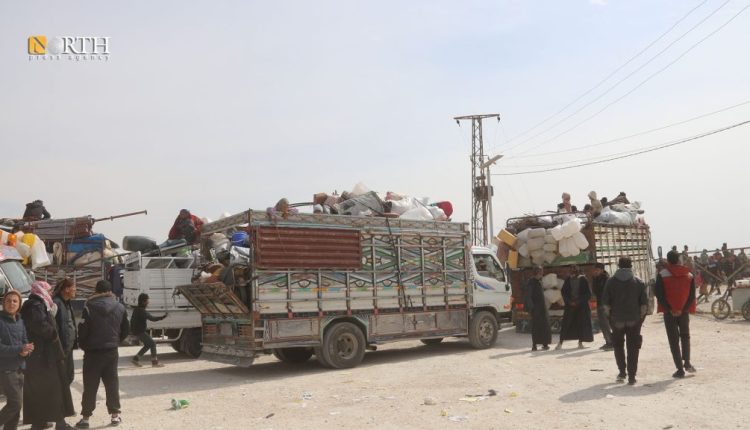Dozens of Families Leave Syria’s al-Arisha Camp to Return to Deir ez-Zor
By Kardo Roj
HASAKAH, Syria (North Press) – On Thursday, dozens of displaced families departed al-Arisha camp, located in the southern countryside of Hasakah, to return to their original areas in Deir ez-Zor and its surrounding countryside, marking a new phase in the gradual return of internally displaced persons (IDPs) in northeast Syria.
Salwa Jajou, co-chair of al-Arisha camp administration, confirmed that 52 families—totaling 274 individuals—left the camp at midday as part of an organized movement coordinated by camp authorities. The departing families originally came from the western bank of the Euphrates River in Deir ez-Zor province, an area that has seen relative improvement in security and access in recent months.
This marks the second such departure this week. Earlier, on Sunday, another group of families from Deir ez-Zor and its countryside also left the camp under similar arrangements, according to camp officials. These returns are part of broader efforts to facilitate the voluntary and safe return of displaced persons in coordination with local councils and community leaders.
Al-Arisha camp, established during intense conflict years, has housed thousands of IDPs fleeing violence from various parts of Syria, particularly Deir ez-Zor. The camp, administered by the Autonomous Administration of North and East Syria (AANES), has provided basic services and protection amid ongoing challenges related to resources, infrastructure, and humanitarian access.
The gradual departure of families is being monitored closely to ensure safe transit and resettlement, with community representatives and local councils in Deir ez-Zor reportedly receiving and assisting the returnees. The process remains voluntary and coordinated through civil structures under the AANES framework.
Camp authorities noted that return movements depend on a variety of factors, including stability in areas of origin, availability of services, and the willingness of families to resume life in their home communities. Many families cited improved conditions and a desire to reunite with relatives or rebuild property as reasons for leaving.
While the camp still hosts many residents, the latest departures reflect ongoing trends of internal displacement management in northeast Syria. AANES institutions continue to call for greater international support to assist returnees and improve conditions both within IDP camps and in return areas.
No incidents were reported during the movement, and camp management indicated that similar departures could occur in the coming weeks depending on developments in coordination with local councils in Deir ez-Zor.

